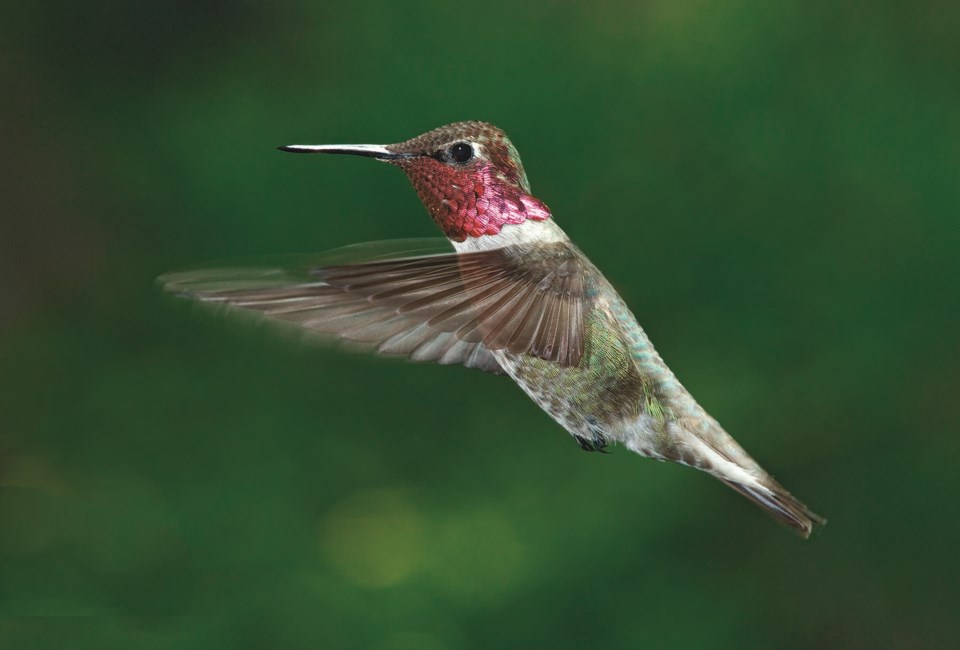Much is heard about the decline of biodiversity around the world in recent times. The causes are myriad with human population growth and increases in consumption levels underpinning many secondary causes such as habitat loss, climate change, herbicide and pesticide pollution, etc. The Sunshine Coast is bucking the trend to a degree, as we have gained four species of birds in the last quarter century. These are species that were simply not here previously but are now either fairly common or abundant.
Sunshine Coast biodiversity has benefitted from an increased diversity of habitats as the area has transitioned from a logging and fishing community with a largely closed canopy coniferous forest to a retirement and tourism economy with a range of habitats from urban and suburban developments, airports, golf courses, farms, orchards, new wetlands, etc.
The four bird species that are recent arrivals are: Anna’s hummingbird, black-capped chickadee, Eurasian collared dove and house wren. Anna’s hummingbird is now an abundant year-round resident and has been aided in its range expansion by the provision of hummingbird feeders. Black-capped chickadees prefer gardens and more deciduous vegetation, as opposed to our original chickadee species, the chestnut-backed, which prefers coniferous habitat. Collared dove is a highly dispersive species that has spread from its original native range in northern India and reached the Coast in 2005. It is closely tied to urban settings.
House wren was first recorded on the Sunshine Coast on May 23, 1993 when Eva Diener reported the species nesting in her garden in Wilson Creek (now ts’ukw’um). It was always found on southeast Vancouver Island, but not here, despite a similar climatic and habitats. After the first report, it was not recorded again until 1999 when birds nested in the Truman Road area on the west side of Halfmoon Bay, and from 1999 to 2008 this was the sole local site for the species. From 2009 I had summer resident birds in my garden on Redrooffs Road and there were also reports from West Sechelt. 2015 to 2017 was the breakout period for the species with reports from multiple locations, and since then, it has become increasingly common in a variety of habitats all along the Coast.
To those not familiar with the species, its presence is most often betrayed by its loud, persistent warbling song, coming from the shrub layer of gardens. The species is a cavity nester and readily takes to nest boxes, but also any cavity in your house. House wrens are found throughout the New World, but only as far north as southern Canada, and on the Coast, we are at the northern extent of their range. To me, the significant aspect has been their explosive population growth once it reached our shores.
To report your sightings or questions contact [email protected] or 885-5539. Good Birding.



